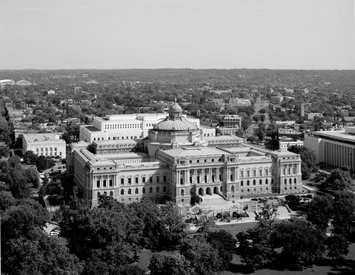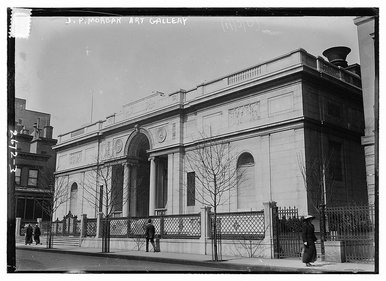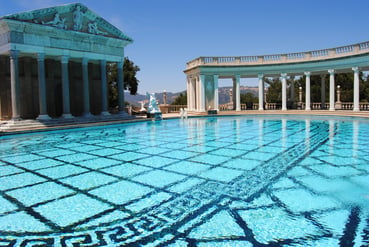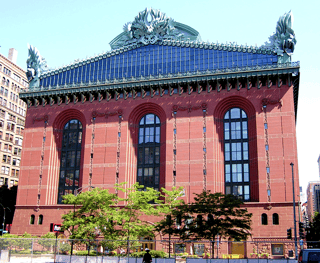Let’s face it: Visiting a library while traveling to a new city is not always atop everyone’s must-do list. Even for the most bookish or literary-minded traveler, libraries as destinations often get lost in the fray when whipping up itineraries or sightseeing spots. Museums. Parks. Skyscrapers. Food markets. Sporting events. These activities more times than not reign supreme over buildings of archaic texts and decaying books where most travelers feel ‘You’ve seen one library, you’ve seen them all.’
But there are a number of libraries across the country that not only warrant serious investigation but also reward visitors with insight into our nation’s history and heritage. Whether simply marveling at the architectural wonders of these buildings or getting lost in the sheer number of volumes they offer, the U.S. plays host to some of the most aesthetically stunning, comprehensive, and interactive libraries the world over.
And given admission to a majority of these libraries is free and they’re often centrally located in the heart of the cities they represent, these libraries are no-brainers for tourists looking to experience the true essence of the places they’re visiting.
So the next time you’re traveling, ditch the museum, skip the promenade, and make sure you visit five of the most interesting U.S. libraries.
The Library of Congress, Washington D.C.
 The Library of Congress, located on Capitol Hill in Washington, D.C., is the oldest federal institution in the country and the second largest library in the world behind The British Library in London. Housed in three separate buildings, the Library of Congress possesses 32 million cataloged books in more than 450 languages. In terms of sheer shelf space, the library has more than 838 miles of shelving, which dwarfs the British Library at just less than 400 miles. While everyday visitors are not permitted to check-out items—many of which include documents and volumes pivotal in the American historical canon—the library hosts a number of festivals and celebrations each year to commemorate its founding, its status among world libraries, and its place in the landscape of American history.
The Library of Congress, located on Capitol Hill in Washington, D.C., is the oldest federal institution in the country and the second largest library in the world behind The British Library in London. Housed in three separate buildings, the Library of Congress possesses 32 million cataloged books in more than 450 languages. In terms of sheer shelf space, the library has more than 838 miles of shelving, which dwarfs the British Library at just less than 400 miles. While everyday visitors are not permitted to check-out items—many of which include documents and volumes pivotal in the American historical canon—the library hosts a number of festivals and celebrations each year to commemorate its founding, its status among world libraries, and its place in the landscape of American history.
The Morgan Library & Museum, Manhattan, New York
 Formerly known as the Pierpont Morgan Library, the library was built in 1906 as the private library and museum of American banker and financier J.P. Morgan. Located in the Murray Hill neighborhood of Manhattan, New York, the library originally held Morgan’s vast, private collection of rare books, manuscripts, art pieces, and other memorabilia. The library was made into a public institution in 1924 following Morgan’s death, and it was designated a New York City and National Historic Landmark in 1966. The ornate, opulent interior of the library is a major draw for visitors, though today much of the library’s holdings are scholarly and research-based. After several additions throughout its history, the library is now comprised of three separate buildings totaling half a city block.
Formerly known as the Pierpont Morgan Library, the library was built in 1906 as the private library and museum of American banker and financier J.P. Morgan. Located in the Murray Hill neighborhood of Manhattan, New York, the library originally held Morgan’s vast, private collection of rare books, manuscripts, art pieces, and other memorabilia. The library was made into a public institution in 1924 following Morgan’s death, and it was designated a New York City and National Historic Landmark in 1966. The ornate, opulent interior of the library is a major draw for visitors, though today much of the library’s holdings are scholarly and research-based. After several additions throughout its history, the library is now comprised of three separate buildings totaling half a city block.
George Peabody Library at Johns Hopkins University
Opened in 1878, the George Peabody Library in historic downtown Baltimore, Maryland was originally named the Library of the Peabody Institute after its founder George Peabody, one of the wealthiest men in America at the library’s founding. Incorporated into the Johns Hopkins University system in 1982, the library’s signature attraction is its five stories of cast-iron balconies and the drastic, dramatic interior design Peabody himself had a hand in conceiving. Dedicated as a free resource of knowledge for all Baltimore residents, the library houses more than 300,000 works with a particular emphasis on religion, British art, American history, travel, and Romance languages and history.
Hearst Castle, San Simeon, California
 Hearst Castle is located on California’s picturesque central coast and was the pet project of American newspaper mogul William Randolph Hearst who commissioned the structure in 1919. The castle was built in part to house Hearst’s massive collection of books, art, and other valuables, and today the building holds more than 4,000 books, many of which were taken directly from Hearst’s personal collection following his death in 1951. The estate was designed in a Spanish and Mediterranean style with elaborate towers, plazas, and fountains scattered throughout the campus. The 60,000 square foot castle offers immaculate views of the central coast. Visitors are invited to take a number of tours and lectures about Hearst and the castle’s history, activities that attract millions of tourists each year.
Hearst Castle is located on California’s picturesque central coast and was the pet project of American newspaper mogul William Randolph Hearst who commissioned the structure in 1919. The castle was built in part to house Hearst’s massive collection of books, art, and other valuables, and today the building holds more than 4,000 books, many of which were taken directly from Hearst’s personal collection following his death in 1951. The estate was designed in a Spanish and Mediterranean style with elaborate towers, plazas, and fountains scattered throughout the campus. The 60,000 square foot castle offers immaculate views of the central coast. Visitors are invited to take a number of tours and lectures about Hearst and the castle’s history, activities that attract millions of tourists each year.
Harold Washington Library, Chicago, Illinois
 Perhaps the newest library on our list, the Harold Washington Library in Chicago, Illinois opened in 1991 after nearly a decade of planning. Named for Chicago’s first black mayor, the library is the central facility in the Chicago Public Library system and is located at the south end of the famous Loop district in downtown. With more than 1.2 million holdings, the library also features a rooftop garden and penthouse where visitors can get a bird’s eye view of the Second City. The library also boasts an impressive collection of written music with more than 40,000 pages across a number of genres, and visitors can even test their musical talent by checking-out volumes and attempting to play on any number of public-use pianos on the library’s eighth floor.
Perhaps the newest library on our list, the Harold Washington Library in Chicago, Illinois opened in 1991 after nearly a decade of planning. Named for Chicago’s first black mayor, the library is the central facility in the Chicago Public Library system and is located at the south end of the famous Loop district in downtown. With more than 1.2 million holdings, the library also features a rooftop garden and penthouse where visitors can get a bird’s eye view of the Second City. The library also boasts an impressive collection of written music with more than 40,000 pages across a number of genres, and visitors can even test their musical talent by checking-out volumes and attempting to play on any number of public-use pianos on the library’s eighth floor.







